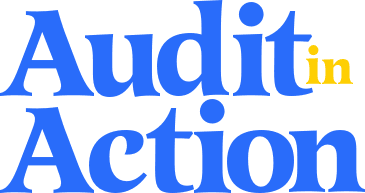Highlights from the 2023 Audit Committee Transparency Barometer
This year marks the 10th year publication of the Audit Committee Transparency Barometer. Released by the Center for Audit Quality (CAQ), the Barometer provides investors and stakeholders with unique insight into the disclosures made by audit committees in proxy statements each year since 2014.
Compiled and published in partnership with Ideagen Audit Analytics, the Barometer measures year-over-year comparison of disclosures for S&P 500, S&P MidCap, and S&P SmallCap companies in distinct key areas, including audit committee duties and composition, auditor evaluation and oversight, audit firm and lead partner selection, auditor compensation, cybersecurity and ESG.
The Barometer highlights disclosure trends from eight questions pertaining to transparency in audit committee proxy statements from 2014 and 2023, illustrating the changes in disclosure rates over time. The report also highlights room for disclosure growth in specific areas, with the focus on improving audit quality and increasing transparency to stakeholders. Additionally, there are several questions added more recently due to emerging risk areas (cybersecurity and ESG).
10 Years of Data
This report marks the 10th year of collaboration between the Center for Audit Quality and Ideagen Audit Analytics to provide detailed analysis on audit committee transparency. The current barometer utilizes the comparative data to show disclosure trends across eight categories over those 10 years.
Notably, there were increases in the S&P 500 disclosures in the areas of discussion of Audit Committee considerations in appointing the external auditor, stating that the evaluation of the external auditor is at least an annual event and explicitly stating that the Audit Committee is involved in the selection of the audit engagement partner.
Through tracking these metrics, we have seen promising improvements in transparency within audit committee disclosures. Six of the eight questions tracked over the ten years have shown improvements in disclosure rates since 2014. The CAQ explains the importance of transparency from audit committees, especially given current political and economic unrest.
Auditor Tenure and Audit Partner Selection
At the heart of the audit committee responsibilities is their oversight of the external auditor. By providing robust disclosures regarding the external auditor, the audit committee creates a clear connection between their oversight and audit quality.
While disclosure trends have gone up there remains room for improvement, particularly surrounding auditor tenure and audit partner selection. Specifically, while 73% in the S&P 500 disclose the length of time the auditor has been engaged, only 11% in the S&P 500 include disclosure related to a discussion about how the audit committee considers length of tenure. Similar proportions can be seen in the S&P Midcap and S&P Smallcap.
Additionally, 53% of S&P 500 companies explicitly state that the audit committee is involved in the selection of the audit engagement partner, however, only 16% go into detail regarding how the audit committee is involved in the selection. This gap demonstrates that while boilerplate disclosures are more common, there is generous room for audit committees to provide more detailed disclosures about their processes when selecting the engagement partner.
Audit Fees
Fee transparency is another area of improvement for audit committee disclosures. Since 2014, the number of disclosures regarding audit fees, and their connection to audit quality, has decreased from 13% to 6% in 2023 from the S&P 500. Audit committee disclosures on fee negotiations can provide stakeholders insights into the oversight the committee has to ensure auditors are appropriately compensated – both from a scope and price perspective.
Of equal importance is appropriate disclosure surrounding changes in audit fees. It is standard practice for the audit committee to include the fees paid to the external auditor in the proxy, however only 25% of disclosures from the S&P 500 provide explanation as to why there is a change in fees paid year over year. By disclosing what caused an increase or decrease in fees, the audit committee demonstrates its consideration of audit quality and helps investors understand what contributes to the audit fee.
Audit Committee Composition
Over the years, the audit committee’s areas of oversight have grown beyond just that of the external auditor and financial reporting. Cybersecurity and ESG create heightened areas of risk and many audit committees have absorbed risk oversight of these two areas. In 2023, 59% of the S&P 500 disclosed that the audit committee is responsible for oversight of cybersecurity risk and 29% disclosed that the audit committee is responsible for oversight of ESG, demonstrating an increase in disclosure when compared to 2022 (54% and 18%, respectively).
With audit committees assuming responsibility for cybersecurity and ESG, the composition of the audit committee becomes an interesting area to investigate. In the S&P 500, more than 50% disclosed that the board of directors had a cybersecurity expert and more than 53% disclosed that the board of directors had an ESG or sustainability expert in 2023. It is increasingly important for companies to disclose board expertise, particularly the audit committee because of its risk oversight, as new areas of risk emerge. In doing so, they demonstrate their ability and commitment to the oversight of emerging risk areas. Notably, the increase in audit committee responsibilities regarding cybersecurity and ESG risk may also be affected by new requirements by the SEC. In July, the SEC adopted the new Cybersecurity Disclosure rule and is continuing work on a new Climate Disclosure rule.
In Conclusion
In the last 10 years, the progress of audit committee disclosures in proxy statements should reassure investors and stakeholders of audit committee efforts to increase transparency. However, there are opportunities for audit committees to promote clear, open communication of their responsibilities and processes regarding oversight of the external auditor and other key financial reporting topics. Explore more of the latest findings from this year’s Audit Committee Transparency Barometer.
Views and opinions expressed are those of the author and do not necessarily represent those of the Center for Audit Quality.

